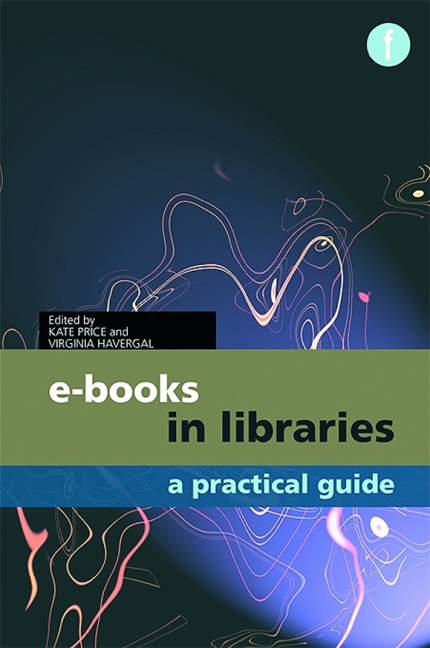Book contents
- Frontmatter
- Contents
- Preface
- The contributors
- Editors’ note
- Introduction
- Part 1 The production and distribution of e-books
- Part 2 Planning and developing an e-book collection
- Part 3 Delivering e-books to library users
- Part 4 Engaging readers with e-books
- 11 Public library users connecting with e-books
- 12 Engaging students with e-books in further education
- 13 Engaging staff and students with e-books in a university setting
- Part 5 The future of e-books
- Part 6 Useful information
11 - Public library users connecting with e-books
from Part 4 - Engaging readers with e-books
Published online by Cambridge University Press: 08 June 2018
- Frontmatter
- Contents
- Preface
- The contributors
- Editors’ note
- Introduction
- Part 1 The production and distribution of e-books
- Part 2 Planning and developing an e-book collection
- Part 3 Delivering e-books to library users
- Part 4 Engaging readers with e-books
- 11 Public library users connecting with e-books
- 12 Engaging students with e-books in further education
- 13 Engaging staff and students with e-books in a university setting
- Part 5 The future of e-books
- Part 6 Useful information
Summary
Introduction
Although public libraries are commonly perceived to be recent arrivals on the e-book scene, some have been involved in providing digital material for recreational reading for almost as long as the technology has been available. Over the same period, there has been a renewed emphasis on the importance of the promotion of reading to the mission of the public library. This chapter explores changing attitudes to both e-books and reader development, and the ways that the two have intersected.
Technology and content
Experience among those public libraries that were early adopters of ebooks tends to be fairly consistent in terms of engaging readers: they all found it a very difficult process, at least initially. There were two main reasons for this, each of which is significant enough by itself, but which together can form a cycle from which it is difficult to escape.
First, there is the question of the technology. Five hundred years in the development of the printed book has created a product that is cheap, familiar, easy to use and that does not need to be recharged or connected to the internet. Why then would anyone choose to move to a platform for reading that can appear confusing, has controls that seem to work in a less than intuitive way, has a form of text display that can be tiring and uncomfortable to read and that may also be very expensive?
Second, there is the question of content. In the 1990s, the range of material available to public library users in e-book format was extremely limited. As mainstream publishers struggled to identify sufficient commercial justification for producing their material as e-books (although moving to digitally based processes to produce printed material clearly had a number of benefits, which they quickly took advantage of), most of the titles available at that time were either comparatively specialist reference or other non-fiction titles, or out of copyright material such as that provided by Project Gutenberg.
- Type
- Chapter
- Information
- E-books in LibrariesA practical guide, pp. 201 - 216Publisher: FacetPrint publication year: 2011



